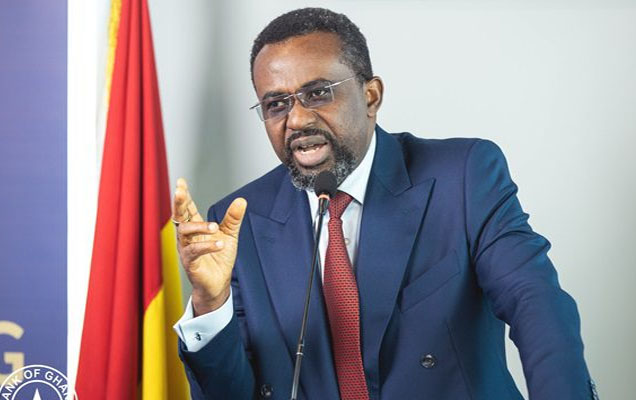Dr. Johnson Asiama
Three out of five members of the Monetary Policy Committee (MPC) of the Bank of Ghana (BoG) voted to increase the policy rate by 100 basis points, raising it from 27% to 28%, citing concerns over rising inflation.
According to the central bank, the publication of the Monetary Policy Decision Statement is a significant step toward enhancing its monetary policy formulation process, anchored on the Inflation Targeting (IT) Framework, which began nearly two decades ago.
The BoG stated that publishing the MPC members’ decisions marks a shift from consensus-based decision-making on monetary policy rate positioning to a majority-vote process, aligning with practices of other major central banks under inflation targeting frameworks.
The first edition of this publication, covering the 123rd MPC meetings held from March 24 to March 26, 2025, provided the public with insights into the deliberations and voting patterns of the members. The majority voted for a 100 basis point hike, reinforcing the Bank’s commitment to ensuring price stability.
Policy Rate Decision
Member 1
Member 1 argued that increasing the policy rate, combined with the Bank’s efficient liquidity management and ongoing fiscal consolidation efforts, would strongly support the disinflation process.
“On price developments, headline inflation declined in the first two months of 2025, although it remains significantly above target, driven largely by decreasing non-food inflation,” the member noted.
Member 2
Member 2 supported an upward adjustment in the policy rate, emphasizing the need for stronger Open Market Operations and continued fiscal consolidation efforts to help achieve the Bank’s inflation targets.
“An upward adjustment in the policy rate, along with stronger Open Market Operations and robust fiscal consolidation, should help deliver the Bank’s inflation objective,” the member stated, justifying their vote for a 100 basis point increase.
Member 3
Member 3 took a more cautious approach, stating that economic activity is projected to remain steady in the forecast period due to fiscal stimulus and positive expectations in the real sector.
“Staying put for longer will provide a more stable path to a sustained decline in inflation toward the medium-term target,” the member argued.
This member voted to maintain the policy rate at 27%, reasoning that it would be prudent to balance inflation and growth objectives, given that headline inflation is projected to remain high in Q2 2025 before declining over the medium term.
Member 4
Member 4 emphasized that, given persistently elevated non-food and core inflation, decisive measures were needed to prevent second-round effects from food price pressures from becoming entrenched.
“The Transformation Agenda could dampen inflationary pressures. However, I judge that the upside risks to inflation far outweigh any downside risks. The balance of risks tilts toward rising inflation, requiring immediate action to re-anchor inflation expectations and reignite the disinflation process,” the member stated.
This member voted in favor of raising the policy rate by 100 basis points.
Member 5
Member 5, however, argued that risks to both inflation and growth remain balanced, making it necessary to maintain the policy rate at 27% to achieve a stable equilibrium between price stability, financial stability, and economic growth.
“Other monetary policy tools should be deployed to reinforce the Bank’s tight monetary policy stance,” the member added, justifying their vote to keep the policy rate unchanged at 27%.
Final Decision
With three out of five MPC members voting for an increase, the policy rate was raised to 28%, reinforcing BoG’s commitment to curbing inflation and maintaining economic stability.
By Ebenezer K. Amponsah


